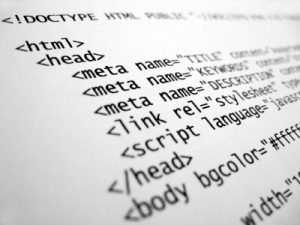
Most web pages we see online were laid out using HTML as their main scripting and coding language. It makes use of different types of symbols, various attributes and syntax in order to come up with a perfectly designed website. Since it was first introduced, web developers have seen and used four earlier versions of HTML until the latest, HTML 5, was released to the public. With the launch of the HTML 5, the definition and basics of web design underwent a total overhaul. We frequently see new devices and applications like smartphones and VoIP products introduced to the market. Some come in pro, basic or beta versions which are designed to respond to the many requirements of the consumers. Since new products grace the market every so often, some consumers become hesitant in buying their gadgets because some fear that a better one might come out after they have hastily purchased one. If you have heard about buyer’s remorse, then you probably know how this feels. Fortunately, when it comes to HTML 5, users wouldn’t have to worry about a new version coming out too soon. The HTML 5 seamlessly fits the requirements of most users regardless if there are new attributes or syntax that are being developed.
Some people liked the latest version of HTML but there are those who did not, which is perfectly fine because there will always be reasons why something won’t sit well with others. Most often, it is about compatibility. Sure, there are users who didn’t warm up to the latest HTML version but it still remains to be a good conversation piece. Whether you find it helpful or would rather use the earlier versions, here are some of its most exciting features:
- The HTML 5’s Features in Detail
HTML 5 boasts of features that could make any web developer and designer scream in excitement. You will be compelled to pay close attention because it has one of the most user friendly interfaces you will ever encounter. The team behind HTML 5 made it a point to maintain and enhance its user-friendly interface in order to attract more users. Because really, who has the time to spend mastering a complicated interface? Some will give up trying in just a couple of minutes. It also comes with a brand new API which allows users to design exciting transitions to a webpage. Understanding the different attributes used in this language is also quick and easy.
- Quick Transitions and Other Benefits
According to those who have had the pleasure of using HTML 5, it is a lot better to use as compared to the earlier versions. With the previous versions, users had to study all the codes to be able to come up with a finished product that can please a picky client. However, with the new HTML 5, transitioning is no longer a problem because it now comes with abbreviations which can be utilized in the process of setting up a web page. It is now more convenient and easier to master. The HTML 5’s enhanced API was created in order to provide users with a better experience while working with the language. It also has a drag and drop facility for a lag free and smooth web design process. Furthermore, HTML 5 also has an offline cloud storage facility which aims to protect your personal files and data from potential threats, which is something we could all use.

